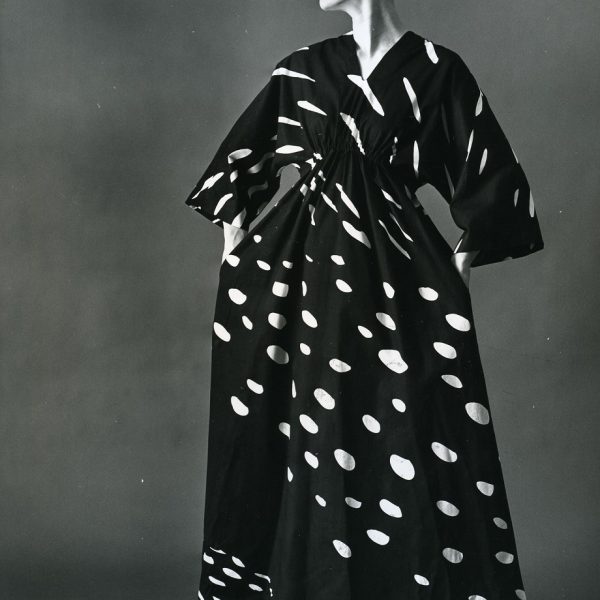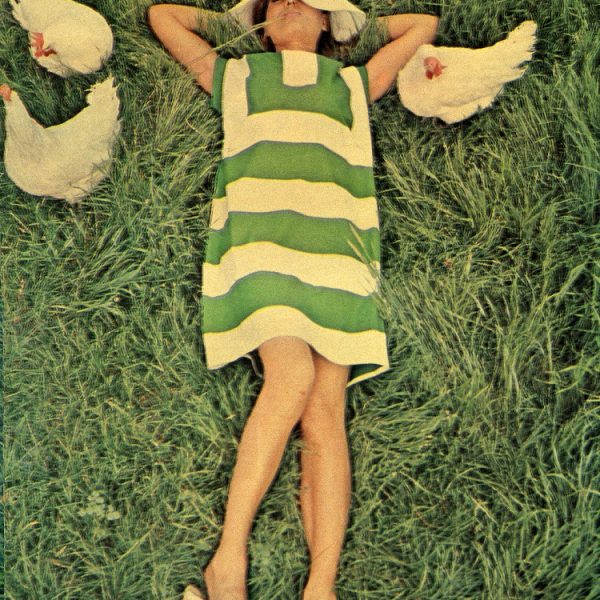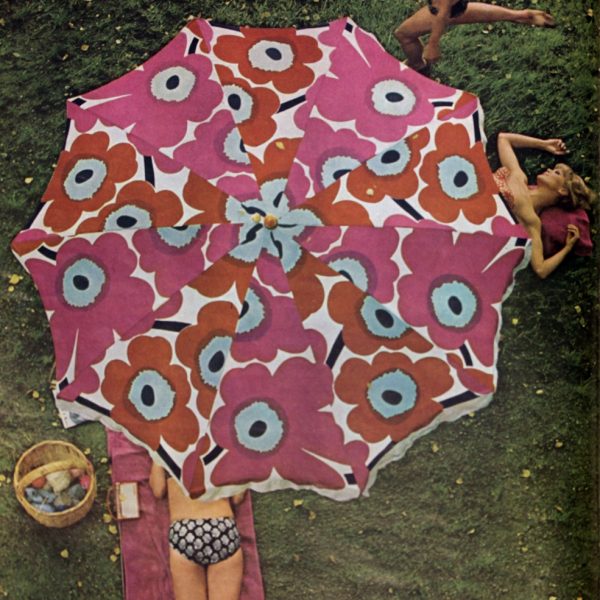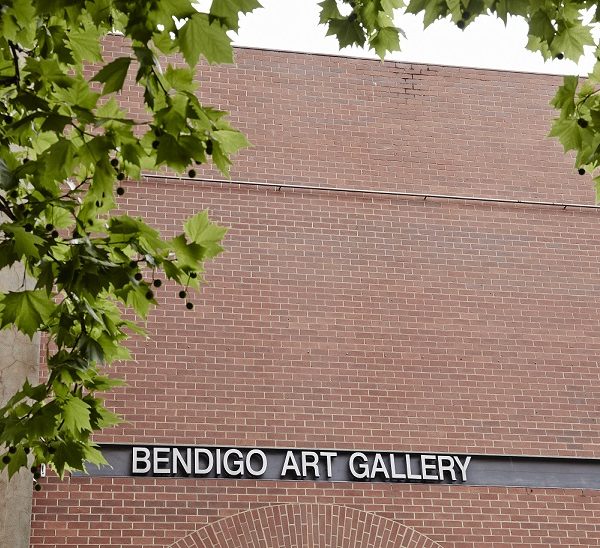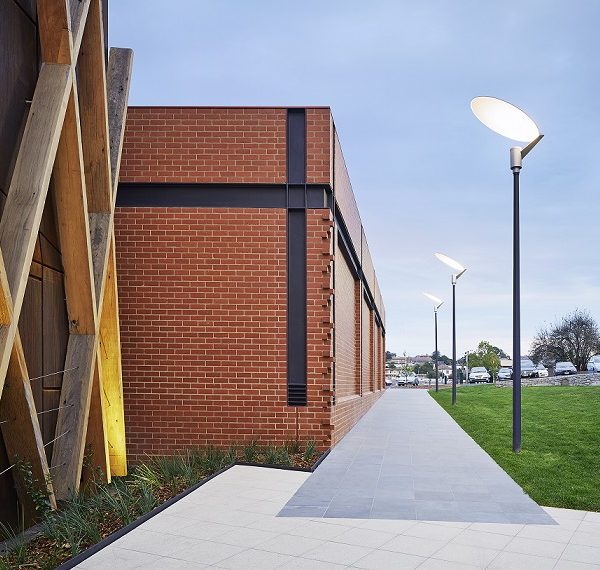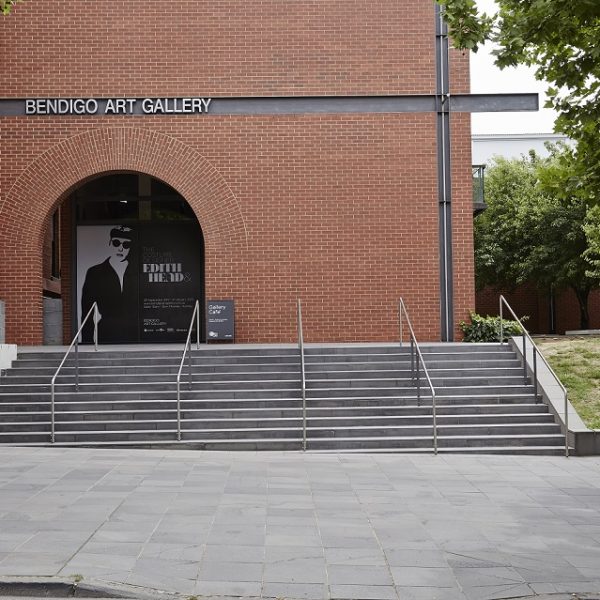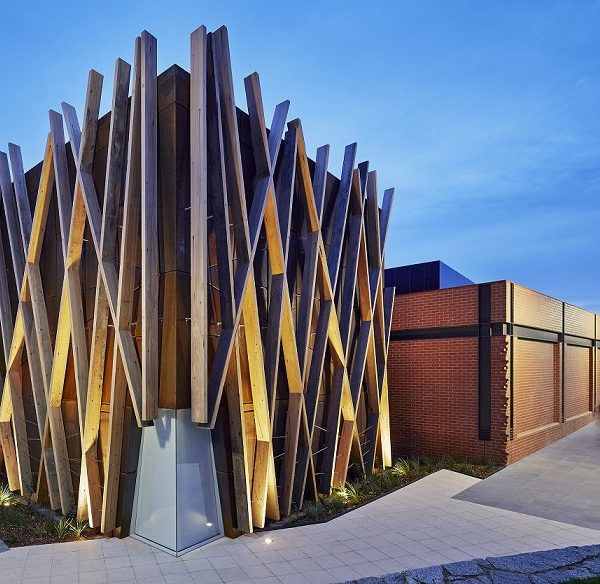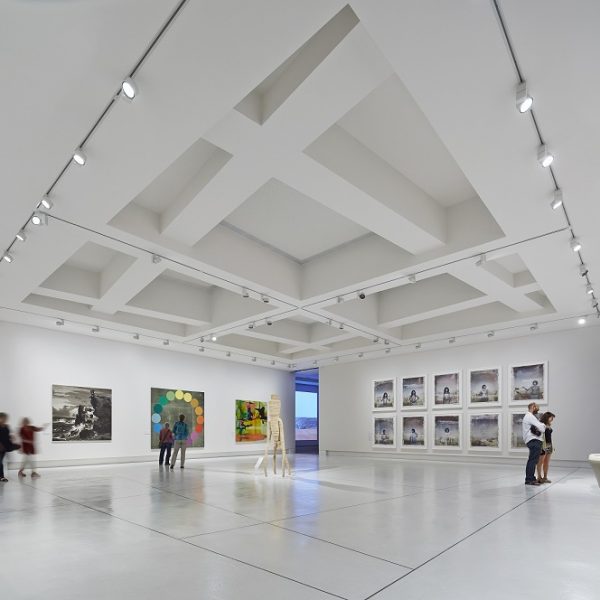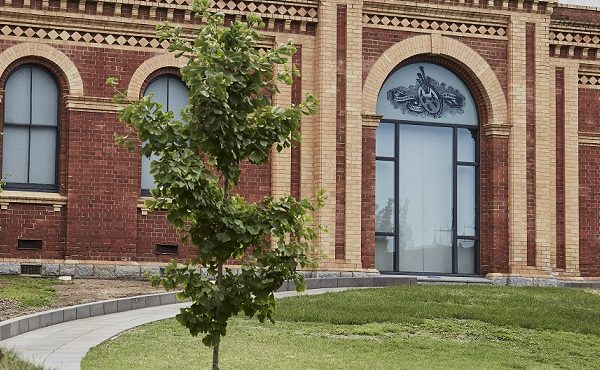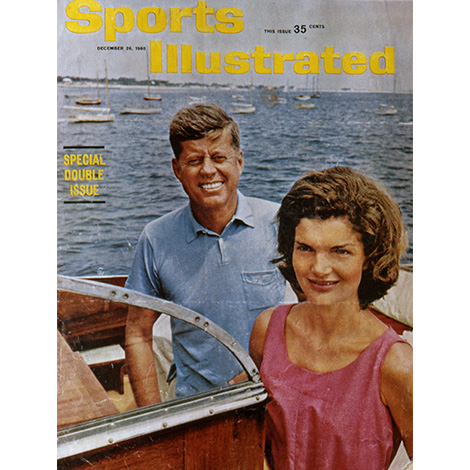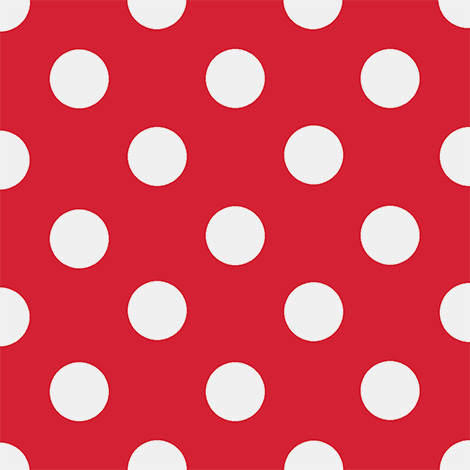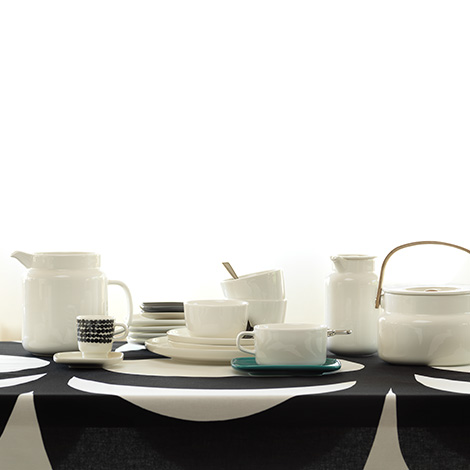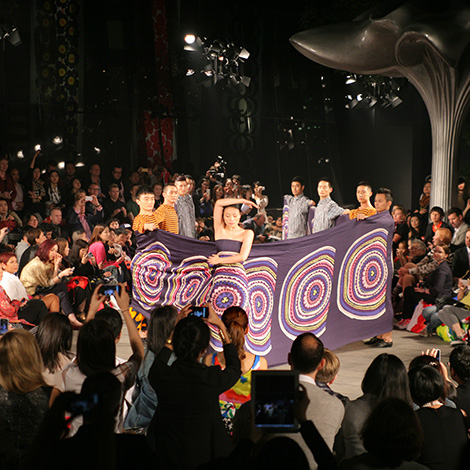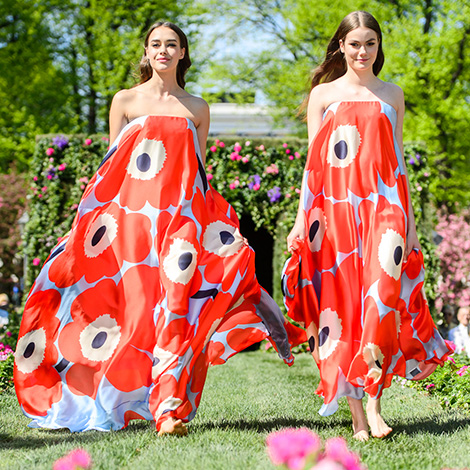Until June 11 2018
Marimekko: Design Icon 1951 to 2018
Established during the golden age of post-war modernism, Marimekko is the Finnish textile and fashion company that achieved international fame in the 1960s and 70s with its bold screen prints and pop-art style graphics. Coinciding with the emerging liberation of women, the founding of Marimekko, or ‘Mary dress’ as the name literally translates, represented a pure concept; free from rules and constraints.
This exhibition traces Marimekko’s meteoric rise from the 1950s to the present, and explores the dualities that define its aesthetic. Its iconic fabric patterns and unconventional ready-to-wear outfits brought colour and informality to an otherwise self-conscious fashion world. With more than 60 outfits, swathes of original fabrics, homewares, sketches and other archival materials, the exhibition focuses on the work of the talented individuals who defined this local textile practice and created its internationally recognisable designs.
BENDIGO ART GALLERY
Bendigo Art Gallery is one of the oldest and largest regional galleries in Australia, established in 1887. Bendigo Art Gallery’s collection is extensive, with an emphasis on 19th century European art and Australian art from the 1800’s, alongside a strong collection of contemporary Australian art. The collection includes painting, sculpture, ceramics, decorative arts, photography, works on paper, and Australian art, including work by artists such as Patricia Piccinini, Bill Henson, Dale Frank, Jan Nelson, Fiona Hall, Emily Kame Kngwarreye, Kit Webster, and Ben Armstrong.
Over the last decade, Bendigo Art Gallery has cemented its reputation for presenting innovative international exhibitions alongside a dynamic and varied suite of public programs and events. Bendigo Art Gallery attracts a diverse audience from metropolitan Melbourne, and from across Victoria and Australia.
ABOUT MARIMEKKO: The Company
1949
Marimekko’s story begins
Marimekko’s story begins in the Viljo Ratia’s textile printing factory. His wife, Armi Ratia, finds new, bold print patterns for her husband’s company. Armi has a clear idea of the future. “One has to dream,” Armi says. “And one must stand out from the rest.” Printex – and later Marimekko – will print textiles by hand until December 1973.
1951
The first Marimekko fashion show
Printex’s modern textiles are admired by Finns, but few know what to do with the new patterns. So Armi and Viljo organise a fashion show to demonstrate how their textiles can be used to make clothes. Marimekko’s first fashion collection is designed by Riitta Immonen, who makes use of print patterns from different Finnish artists, including Maija Isola. The show is held at the Kalastajatorppa hotel in Helsinki in May. The audience is enthralled by the colourful patterns and clean cuts. The clothes are sold almost right off the models’ backs. A few days after the show, Marimekko is officially registered as a company. The first Marimekko shop opens in Helsinki the following year.
1954
Logo
The Marimekko logo is born. Armi wants it to be simple and timeless. A graphic designer uses a modified version of a classic Olivetti typewriter font to create the logo. Five decades later, the Marimekko logo is still going strong.
1956
Jokapoika
Vuokko Eskolin-Nurmesniemi designs the Jokapoika shirt – the longest running Marimekko classic still in production.
1960
Jacqueline Kennedy buys seven Marimekko dresses!
The US presidential campaign is in full swing and one of the candidate’s wives, Jacqueline Kennedy, buys seven Marimekko dresses all at once. Her purchase makes the headlines and Marimekko is an overnight sensation. The future First Lady also appears in her Marimekko summer dress on the cover of the December edition of Sports Illustrated. The original dress is designed by Vuokko Eskolin-Nurmesniemi. In the 1960s, Marimekko is regularly featured in international fashion magazines like Elle, Vogue, Harper’s Bazaar, and Women’s Wear Daily.
1964
Unikko
One of Marimekko’s most beloved patterns sees daylight when Maija Isola paints her radiant Unikko, even though Armi was against the design of floral patterns in Marimekko. Maija Isola would also design other iconic patterns like Kaivo and Seireeni later that same year. Designing iconic patterns seems to be second nature to Maija. Prior to Unikko, she had already designed classics like Kaivo, Seireeni, Kivet and Lokki. Maija designs more than 500 textile patterns in her 38 years with Marimekko.
1968
Tasaraita
Denim is taking men’s and women’s fashion by storm. Designer Annika Rimala, who had joined in Marimekko in 1960, wants to create a clothing collection that goes with jeans. Clothing that will appeal to every denim lover – regardless of age, size or gender.
1971
Olkalaukku
Armi’s son, Ristomatti, uses cotton canvas to create the Olkalaukku shoulder bag – a Marimekko classic almost everyone has or has had. He soon goes on to design other classic cotton canvas bags, including Matkuri.
1974
Fujiwo Ishimoto
Japanese designer Fujiwo Ishimoto joins Marimekko. During his career at Marimekko, he designs about 400 magical textile patterns.
1975
Bo Boo
“Katsuji Wakisaka designs Bo Boo, a Marimekko classic featuring cars, trucks and buses. The pattern immediately wins over both children and playful adults. Especially in the United States, Bo Boo inspires a wonderfully varied and colourful assortment of products…”
1979
Marimekko’s dark moment
Armi Ratia dies on 3 October. Her death leaves an immense void. Armi was Marimekko.
1979
Maisema
Fujiwo Ishimoto, the creative force behind so many Marimekko classics, designs one his most popular patterns, Maisema (Landscape). The iconic pattern is faithful to Finnish nature in shade, colour and light. Mother Nature is present in almost of all Ishimoto’s pattern designs – whether figurative or abstract.
1991
A brilliant new owner
Kirsti Paakkanen buys Marimekko in September 1991 and wastes no time in changing the company. She ushers in a new era of growth and profitability, and welcomes new designers like Ritva Falla who specializes in women’s business wear. Jukka Rintala and Jaana Parkkila are also recruited as fashion designers and Matti Seppänen begins to work on men’s clothing. Marja Suna, who was hired by Armi in 1979, make her mark as a resourceful fashion designer. Suna is the creator of Marimekko’s first knitwear collection.
1992
First fashion show in the park
Kirsti comes up with the idea of organising a fashion show in Esplanade Park in the heart of downtown Helsinki. This marks the beginning of a new summertime tradition that continues to this day. Kirsti also brings joy to the friends of Marimekko with free fashion shows elsewhere in Finland at different times of the year.
1994
Mika Piirainen
Fashion designer Mika Piirainen joins Marimekko. At the beginning of the 2000s Mika is inspired by classic Marimekko patterns and begins to use them in his clothing designs.
2001
More young designers
Designer Sami Ruotsalainen settles in at Marimekko. In 2003 and 2006, competitions for young designers pave the way for the next generation of Marimekko designers, including Maija Louekari, Aino-Maija Metsola and Jenni Tuominen. They go on to create many of Marimekko’s most popular patterns in the coming years.
2006
First Marimekko stores in Japan
Marimekko builds a network of stores in Japan.
2007
Mika Ihamuotila takes helm of Marimekko
Mika Ihamuotila becomes the majority owner of Marimekko and begins as the company CEO in February 2008.
2009
Oiva tableware launched
Sami Ruotsalainen’s Oiva tableware hits the stores and immediately attracts a devoted following. Finding inspiration in allotment gardens, Maija Louekari designs the first patterns for the tableware collection.
Duo Rinne Niinikoski make debut
Piia Rinne and Noora Niinikoski design their first clothing collection for Marimekko: vibrantly colourful knitwear and outfits with patterns inspired by Marimekko’s bold floral designs.
2011
Flagship stores
Marimekko’s flagships store has resided on Helsinki’s most fashionable shopping street, North Esplanade, since 1974. In 2011, the store is completely renewed and moved a short walk up from its original location to its new address on North Esplanade. A Marimekko flagships store is also opened in New York and a year later in Sydney, Australia too.
2011
Converse ♥ Marimekko
The first Converse ♥ Marimekko sneakers spring into stores in the spring of 2011. Altogether, there have been six Converse ♥ Marimekko collections. Marimekko has been collaborating with international brand since the mid-1970s.
2011
Global fashion weeks
For the first time in its history, Marimekko premieres its Spring and Summer 2012 fashion collections in Tokyo. Next in line are the New York Fashion Week in 2013 and the Stockholm and Copenhagen Fashion Week in 2014.
2011
Normi bags
Tuula Pöyhönen designs a new bag collection for Marimekko. Combining humour with practicality in a very Marimekko way, the collection has the makings of a Marimekko classic, and some of the bag models are included in Marimekkko’s permanent collection.
2012
Call of China
The first Marimekko store in China opens in Hong Kong. In Shanghai, Marimekko organises a fashion show in the wonderfully green People’s Park, with dancers from the world-renowned Jin Xing Dance Theatre modelling Marimekko outfits and clothing. Shanghai and Peking get their own Marimekko stores the following year.
2013
Sääpäiväkirja
The Sääpäiväkirja (weather diary) collection is launched to sunny weather. Inspired by meteorological phenomena and seasonal change, Aino-Maija Metsola brings a painterly brushstroke to the collection’s colour-rich print patterns. The Sääpäiväkirja collection includes fabrics, kitchen textiles, posters and Oiva tableware.
2013
Konkkaronkka
Marimekko welcomes a new member to the In Good Company product family. Designer Mari Isopahkala’s Konkkaronkka (merry bunch) is a tribute to deliberately odd-paired yet personal cutlery.
2014
Unikko celebrates 50th anniversary
Forever young Unikko was celebrated around the world in colourful ways: shows and exhibitions, pop-up stores and coffee shops, air journeys and shared stories of brave choices.
2015
Tiina Alahuhta-Kasko becomes President of Marimekko
Tiina Alahuhta-Kasko and Mika Ihamuotila assume joint responsibility for the running of the company. Tiina acts as the President and CEO and Mika as the Executive Chairman of the Board.






